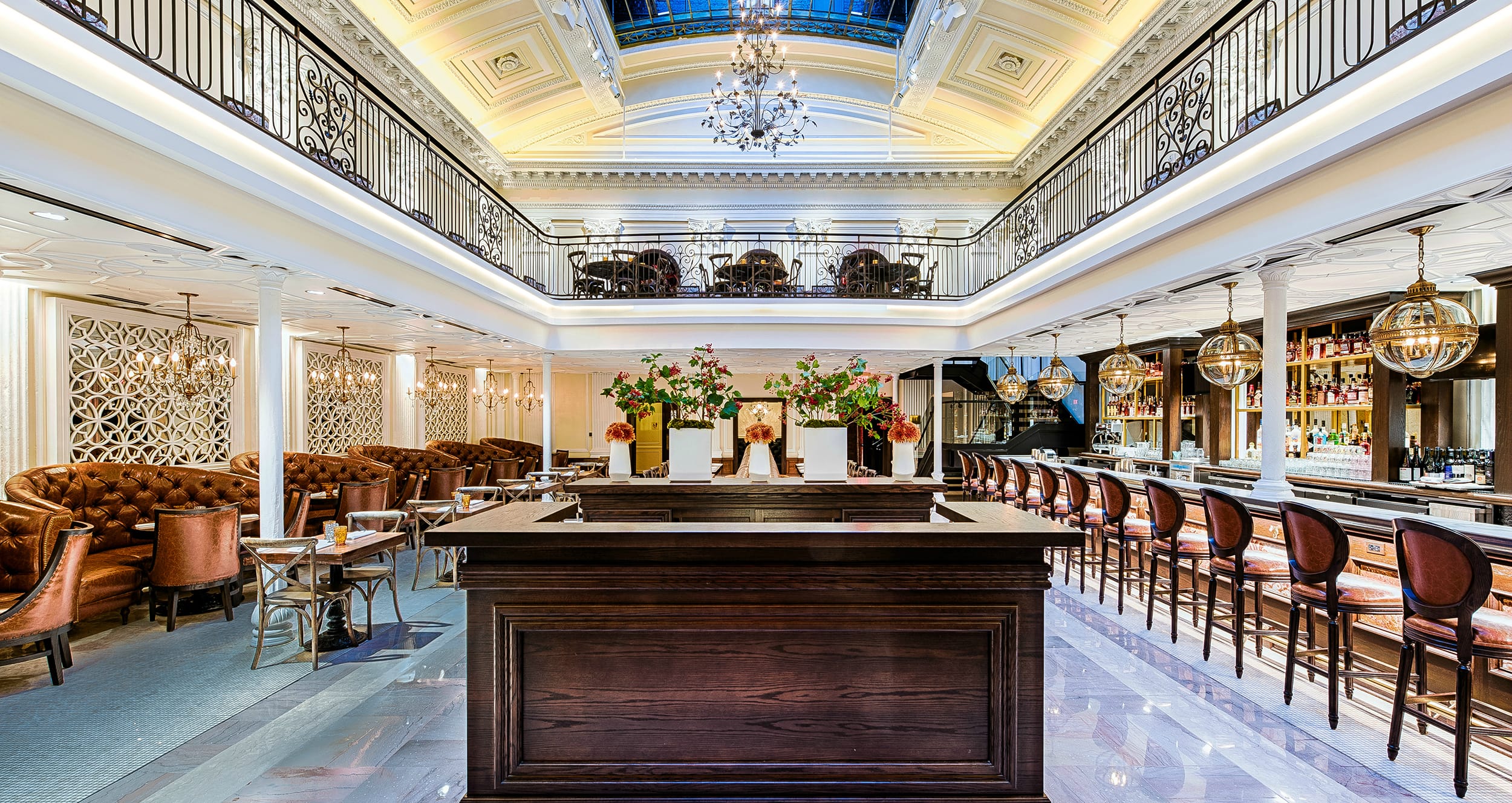Edward Lee’s Succotash Dazzles in D.C.
The acclaimed chef puts an inventive spin on Southern cuisine at the latest iteration of his popular restaurant


Korean-American chef Edward Lee may have embraced Southern cooking years ago, but he wants to make one thing clear: “I’m never going to make hush puppies.” Beyond that, few things are off-limits. His blending of traditions and techniques has earned him countless accolades, thanks to complex, refined dishes that display rare creativity. Known for appearing on Bravo’s Top Chef and PBS’s Mind of a Chef, Lee also owns the restaurants 610 Magnolia and MilkWood in Louisville, Kentucky, which until recently was the only city where you could sample his cooking. That began to change when he opened his first Succotash in Maryland’s National Harbor two years ago, and in September his East Coast conquest continued with the unveiling of a more opulent Succotash in Washington, D.C.
Even with these new ventures, Lee maintains roots in the Derby City, which is not only home to his first two restaurants but also where he sources the country ham and bourbon he serves at his other establishments. The fact is, he says, Louisville has made him who he is today. After he moved there 15 years ago, his discovery of Southern flavors and customs allowed him to develop his hybrid style, which is also shaped by his Korean heritage, New York upbringing, and culinary training in France.

On the Succotash menu in D.C., the wildly popular Nashville-Style Hot Fried Oysters exemplifies his diverse inspirations: Local oysters are treated to a Southern preparation commonly used for chicken and served on top of a brioche bun, with a cucumber-and-ranch sauce to round out the heat. Other Southern staples with a twist grace the menu, such as peel-and-eat shrimp with a side of gochujang cocktail sauce, beignets with a dusting of green-tea powdered sugar, and collard greens with kimchi and country ham.

For him, these inventive riffs personify what Southern cuisine truly is.“There’s this idea that Southern food is homogenous, but really it’s the original fusion cuisine,” explains Lee, citing centuries of cultures and immigrants that have shaped its flavors.
Reflecting on his choice of Washington, D.C., Lee says that it’s “the northernmost city that understands and truly respects Southern food.” An added and unexpected benefit has been his new appreciation for art. “When I get really pissed off at the restaurant, I just go to the National Gallery” a couple blocks away, he says. “I fume and look at old Dutch paintings, and it calms me down.” It may not be art for art’s sake, but it works for Lee.
